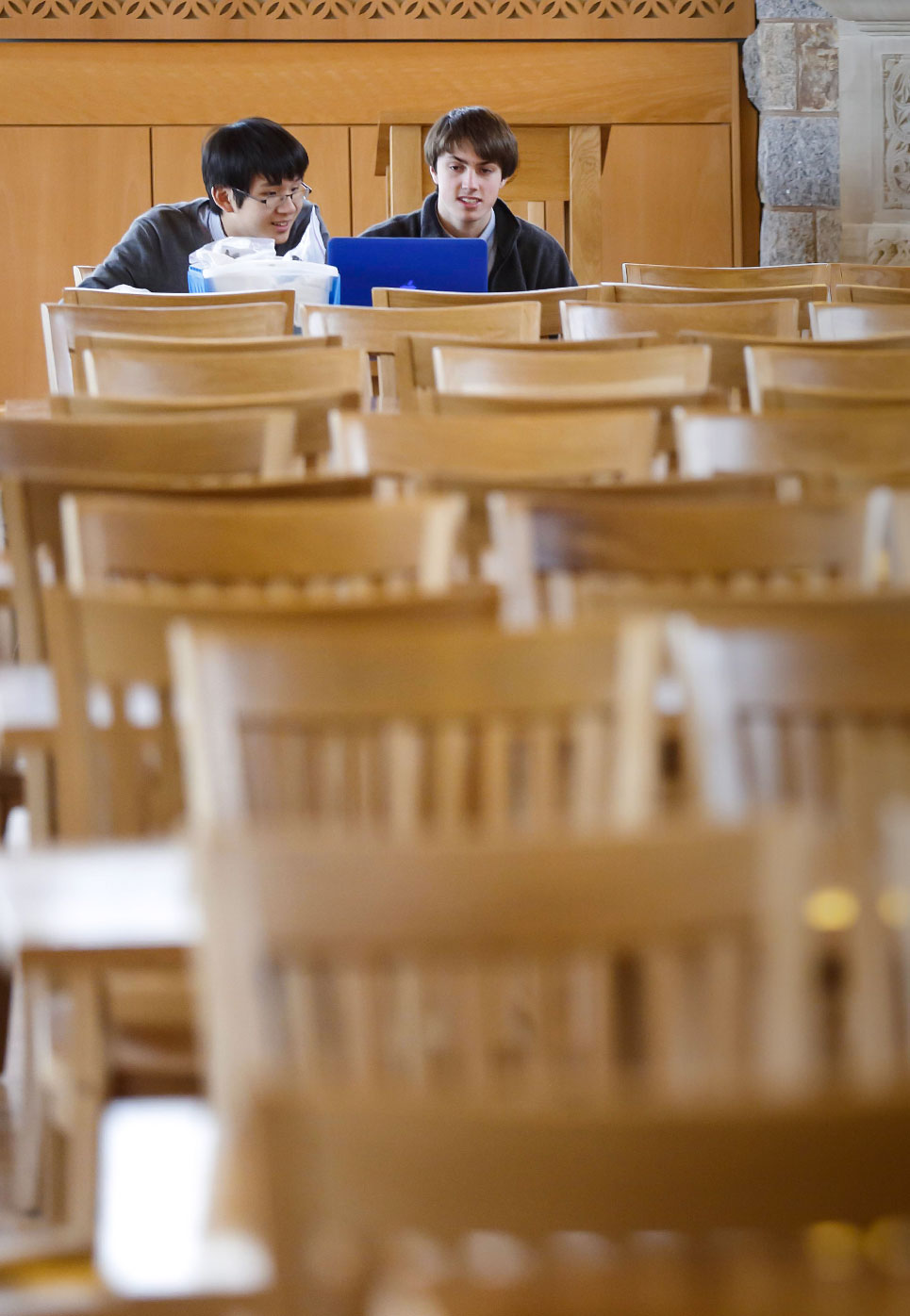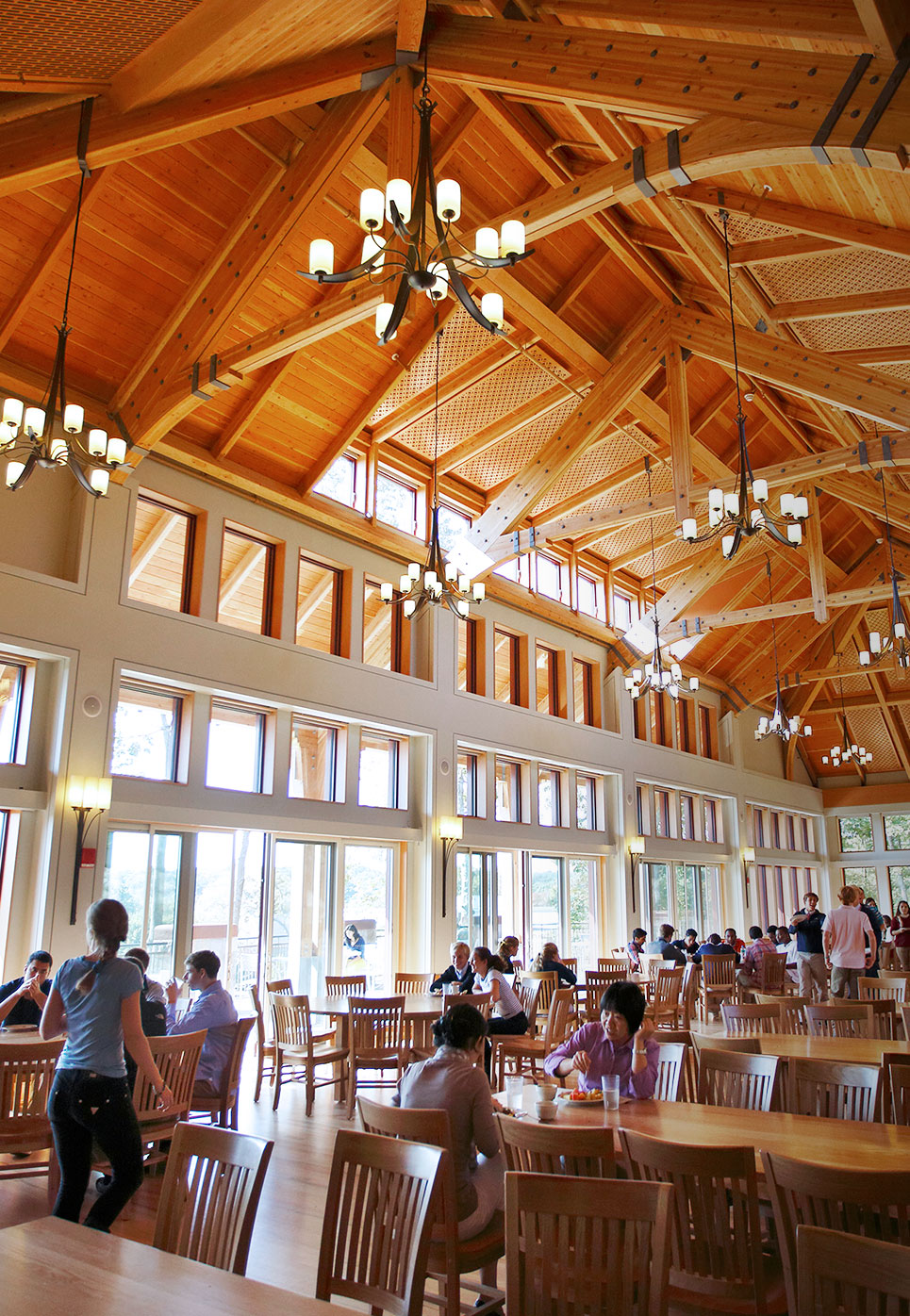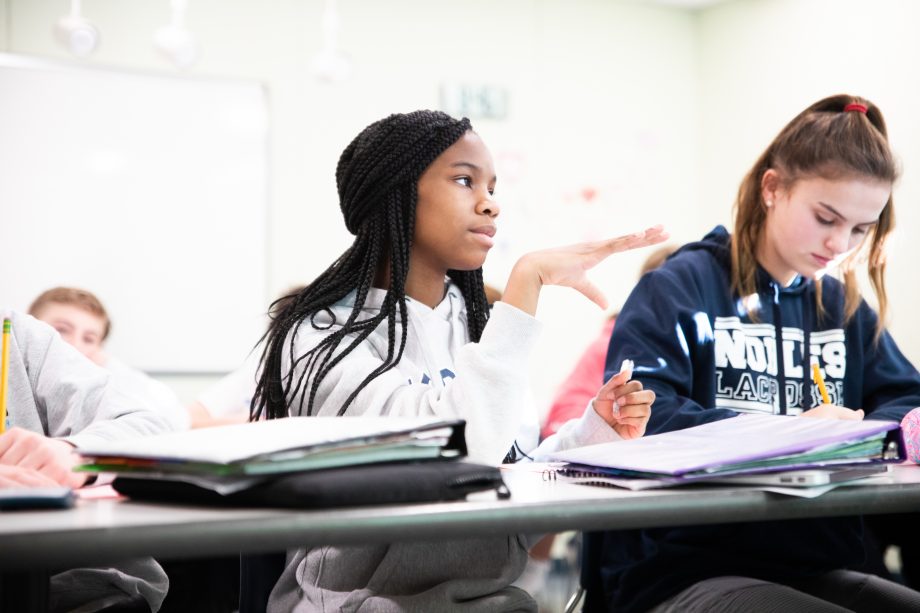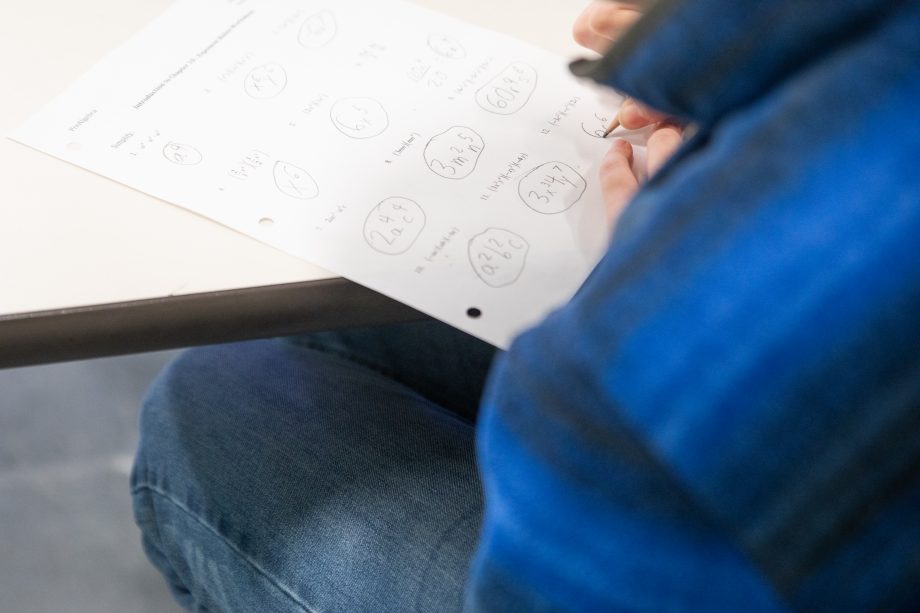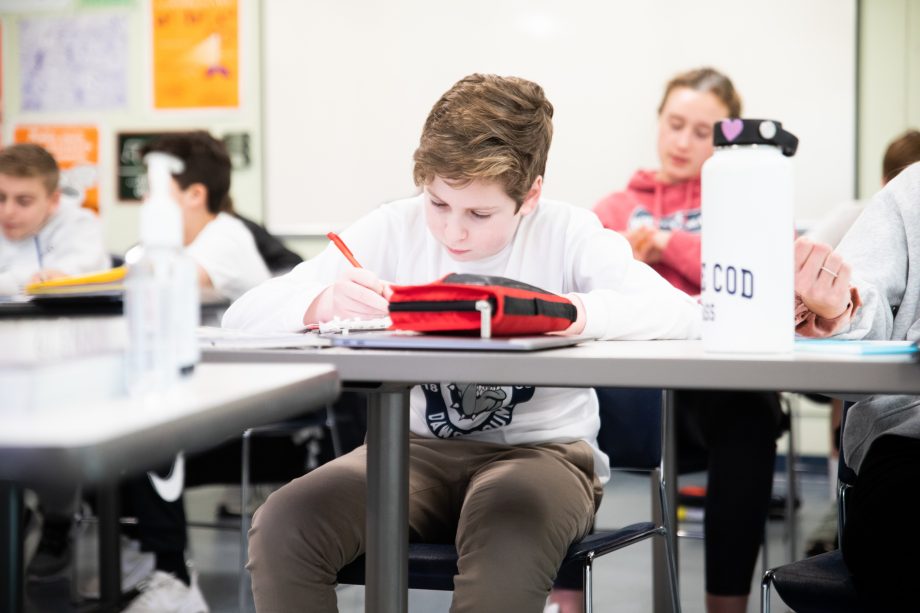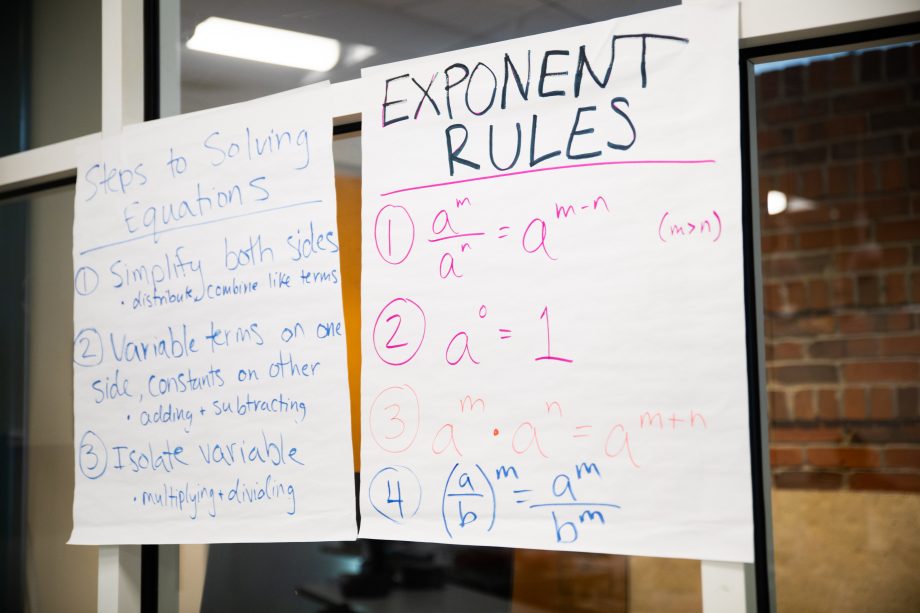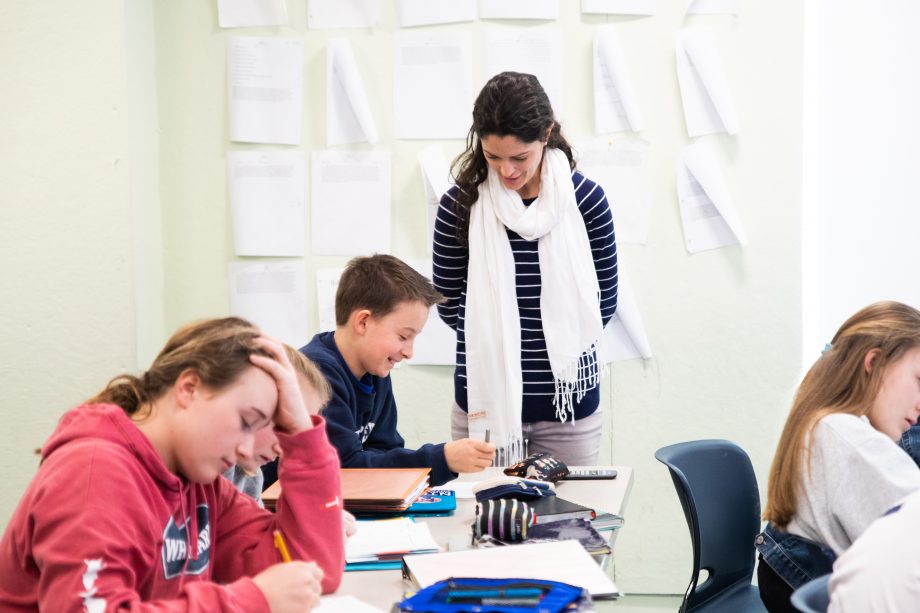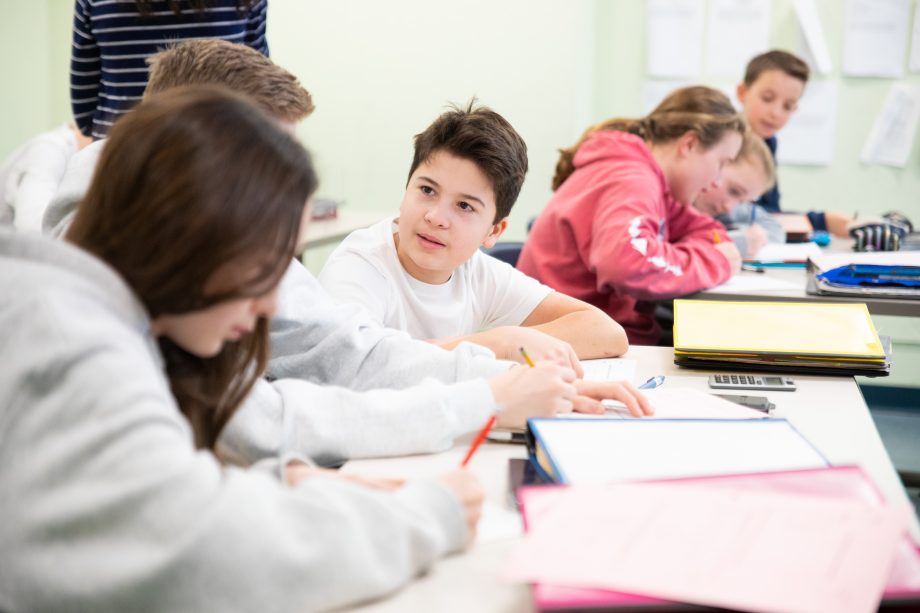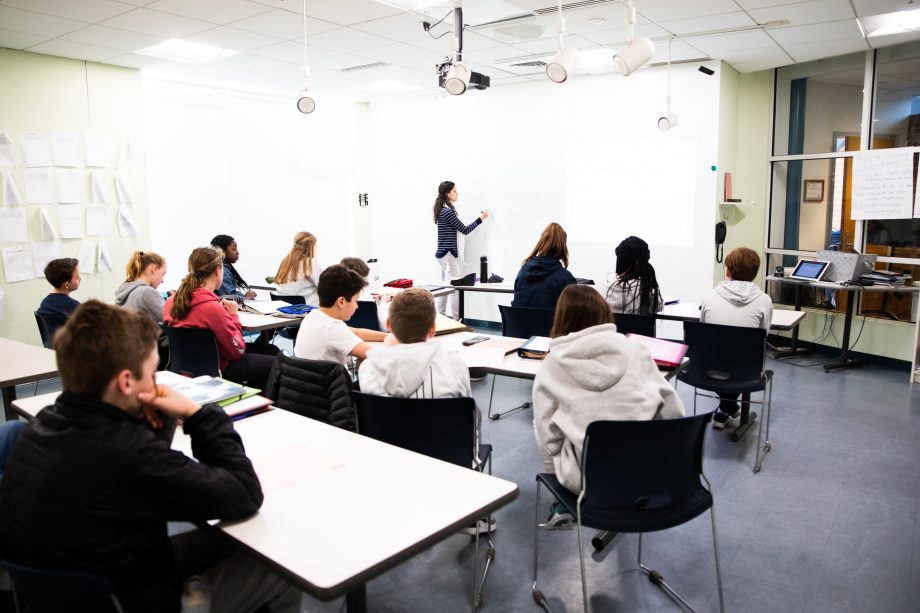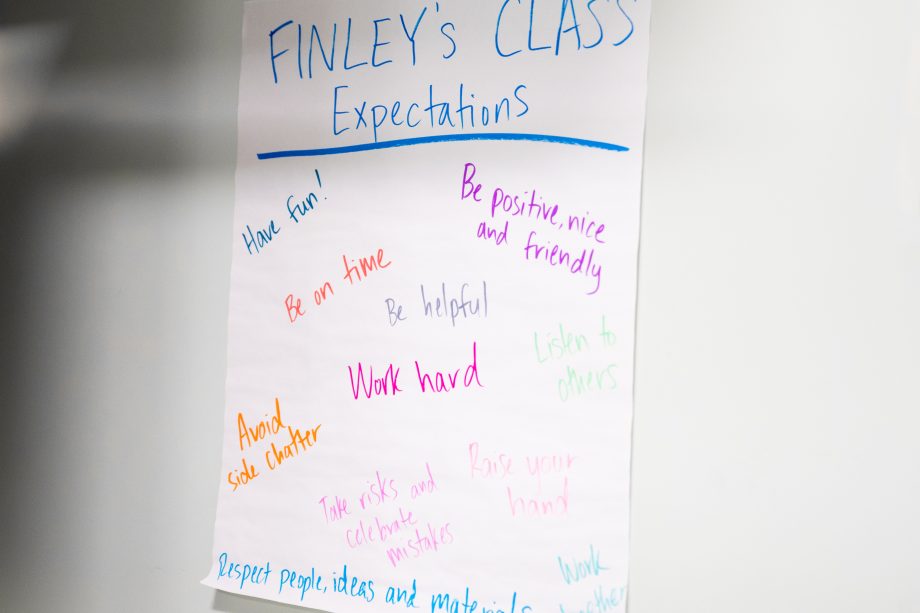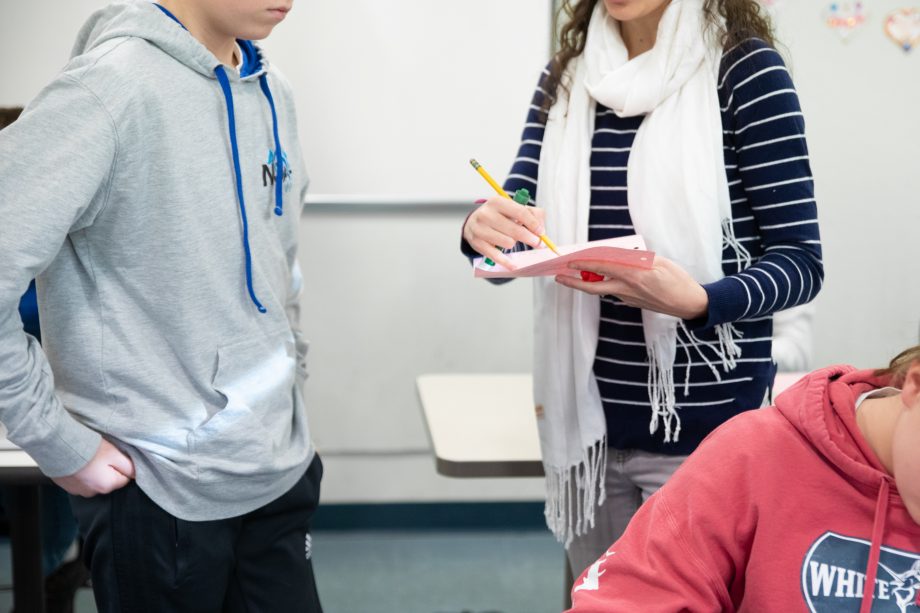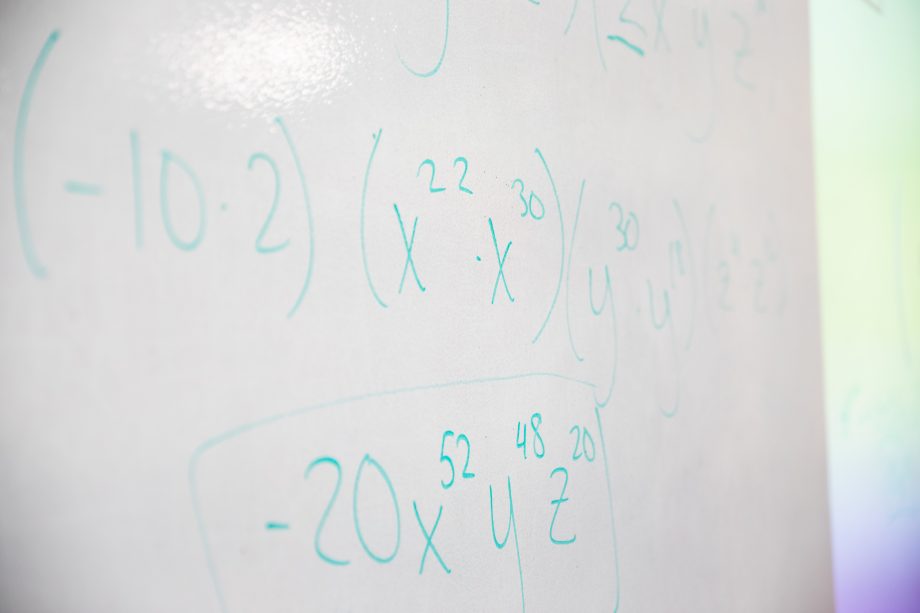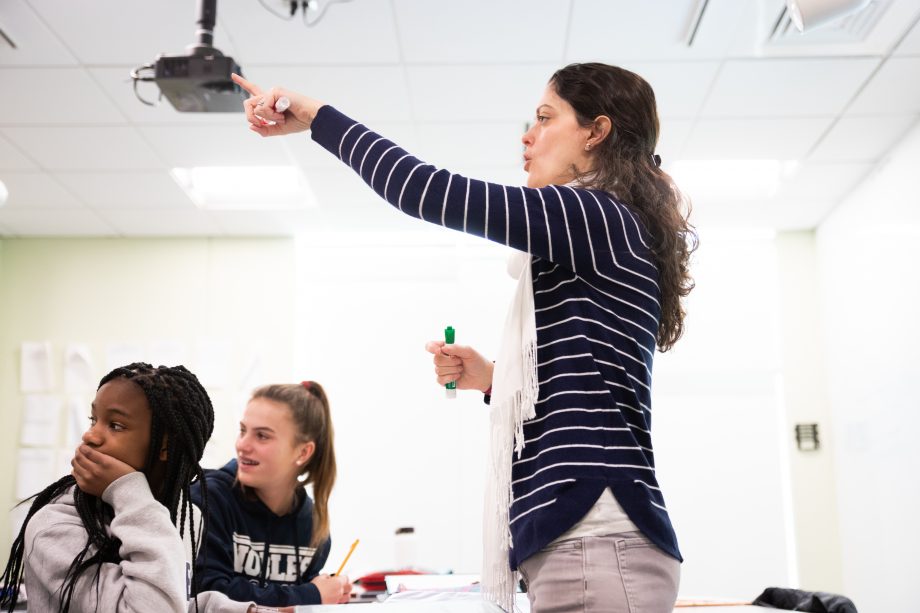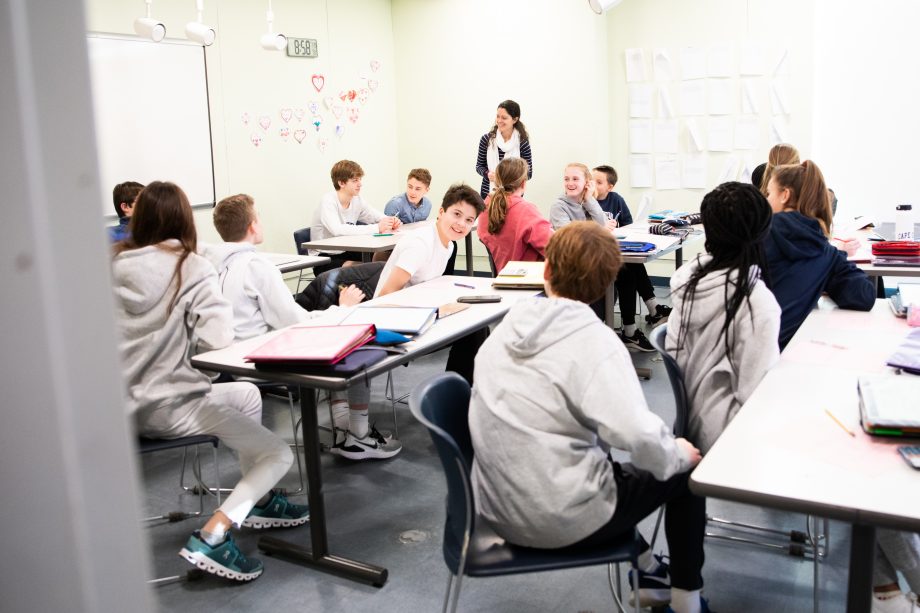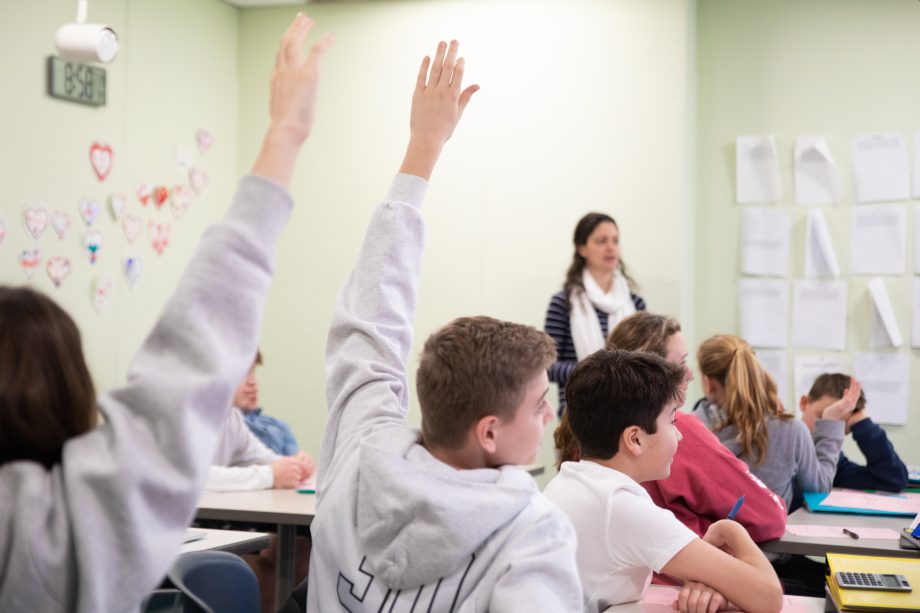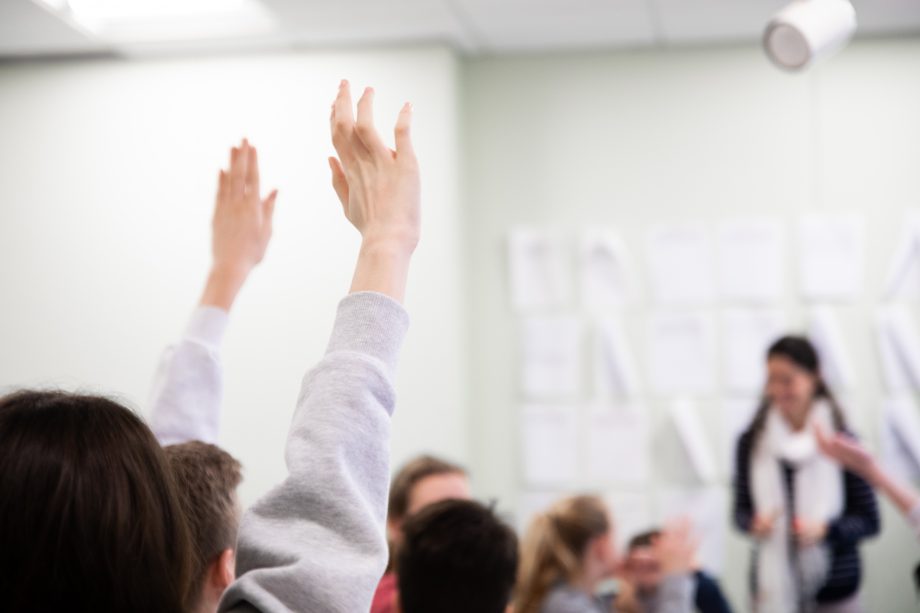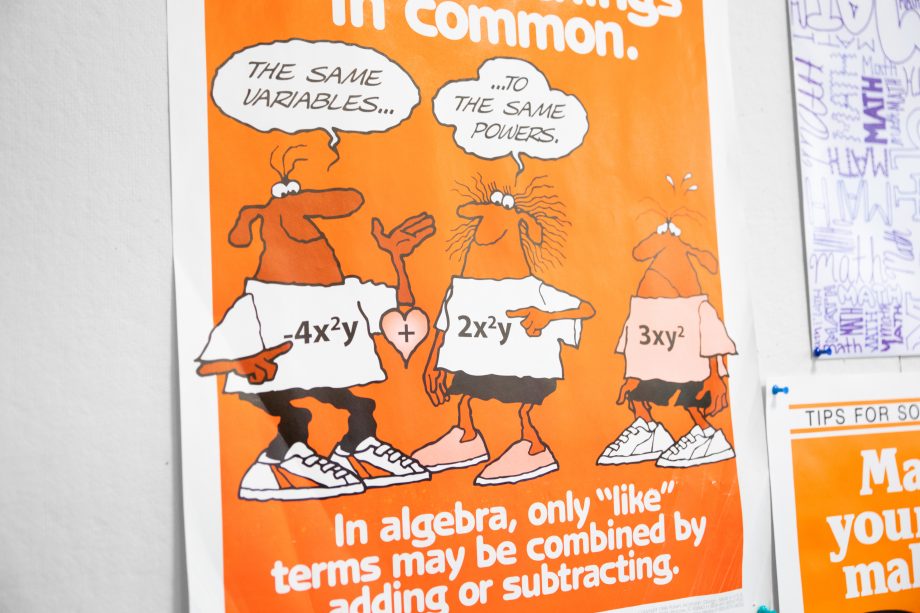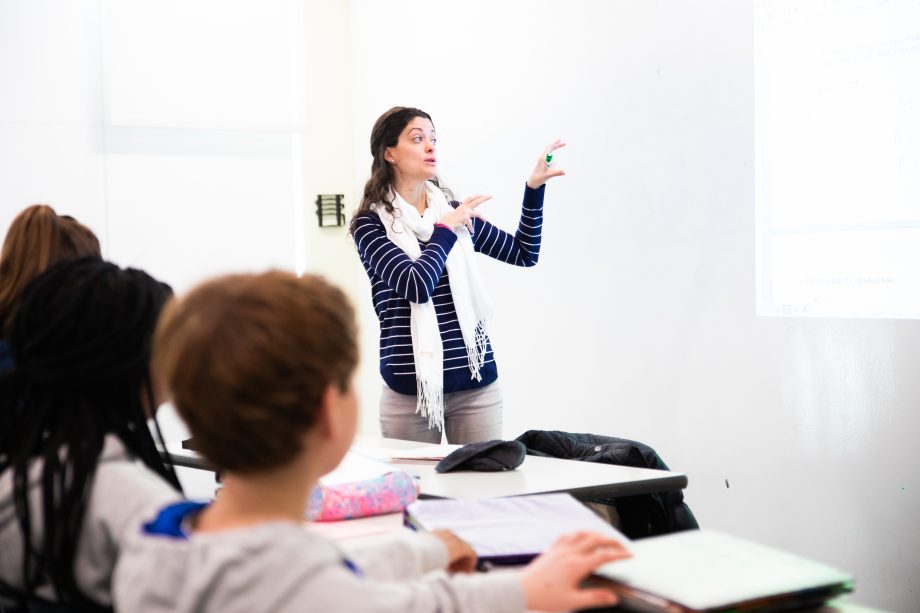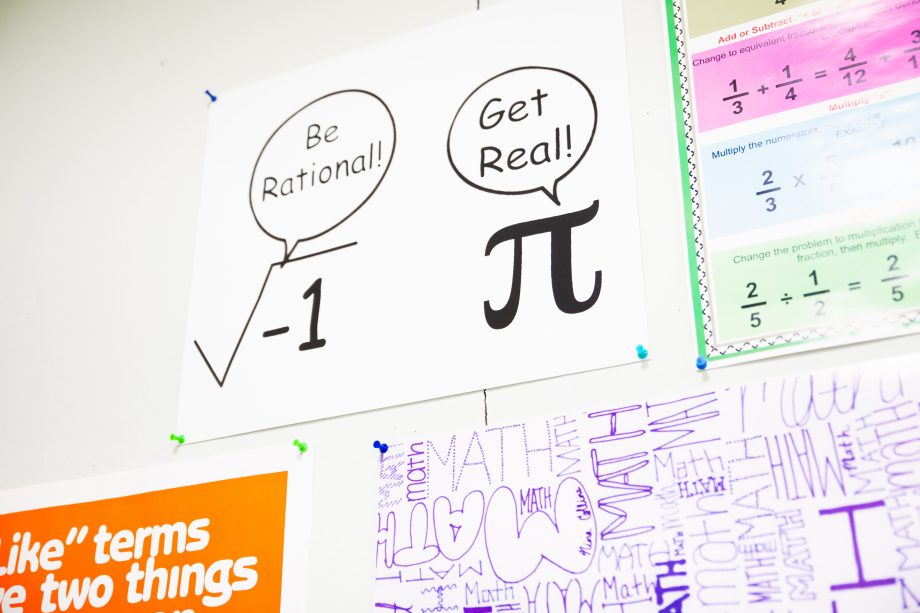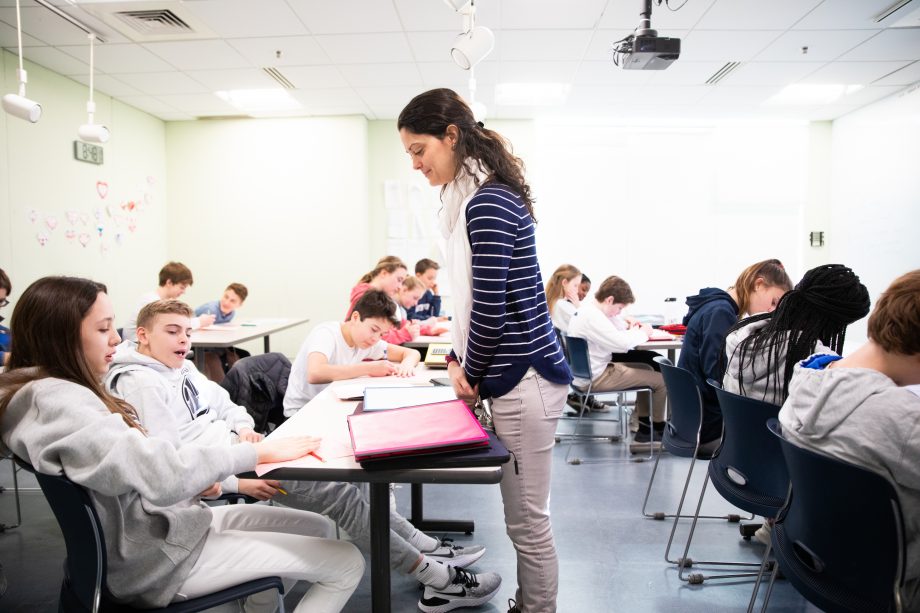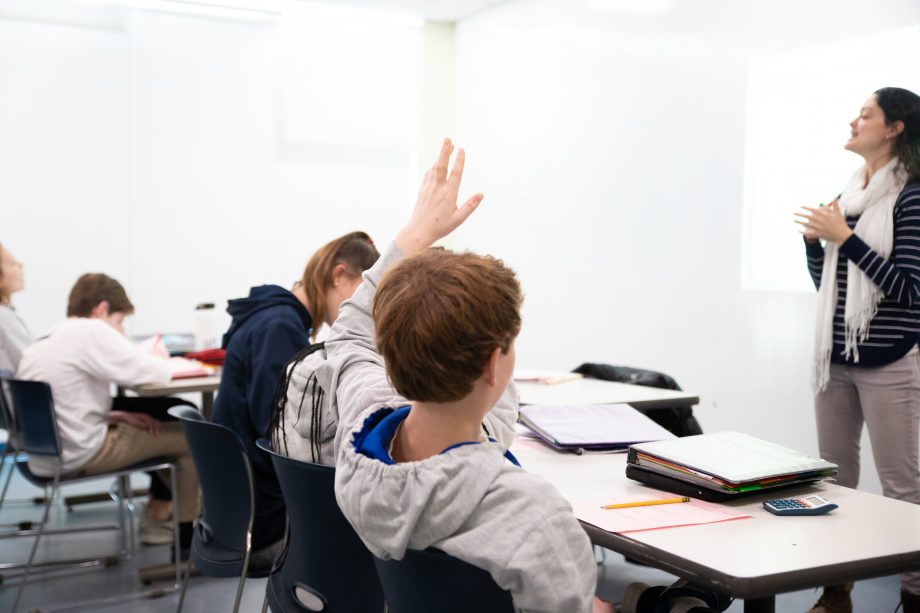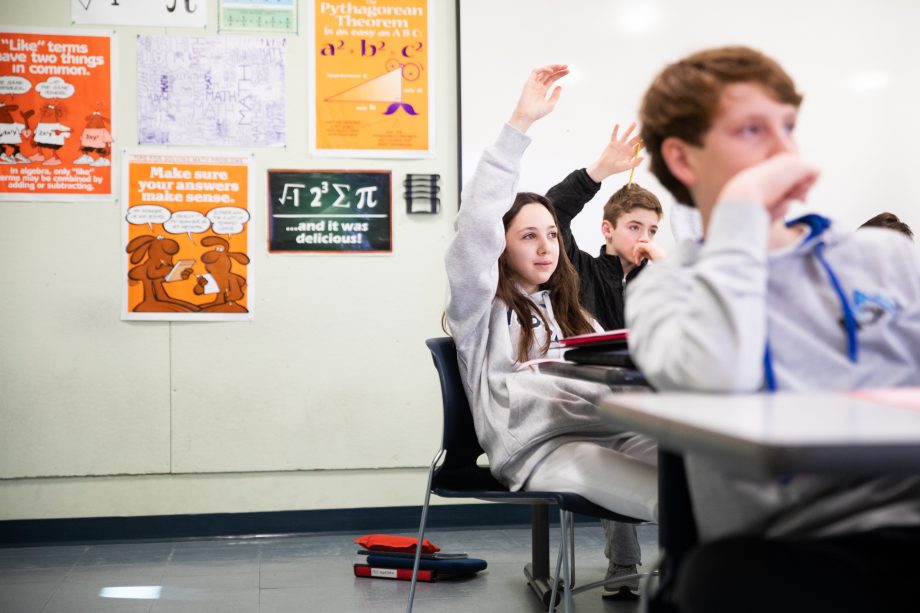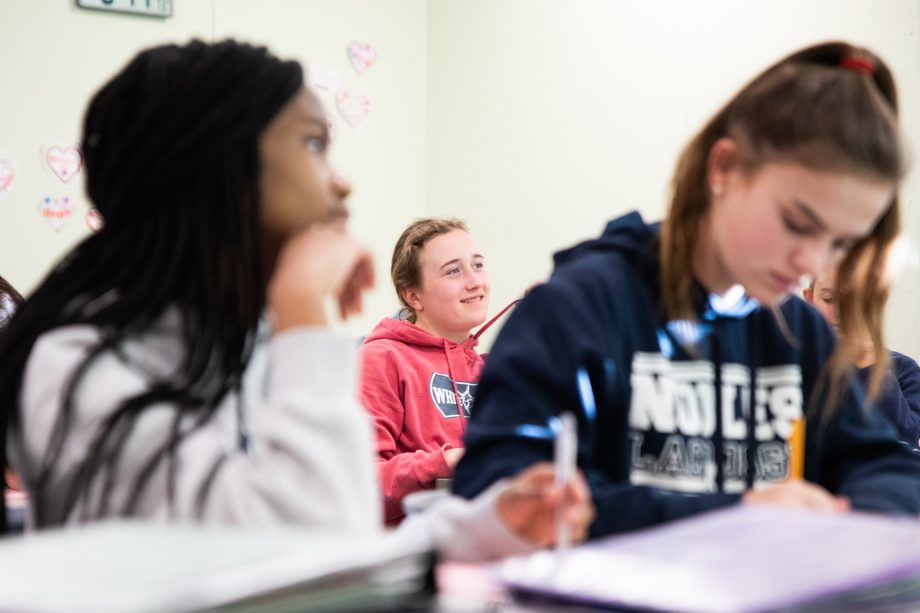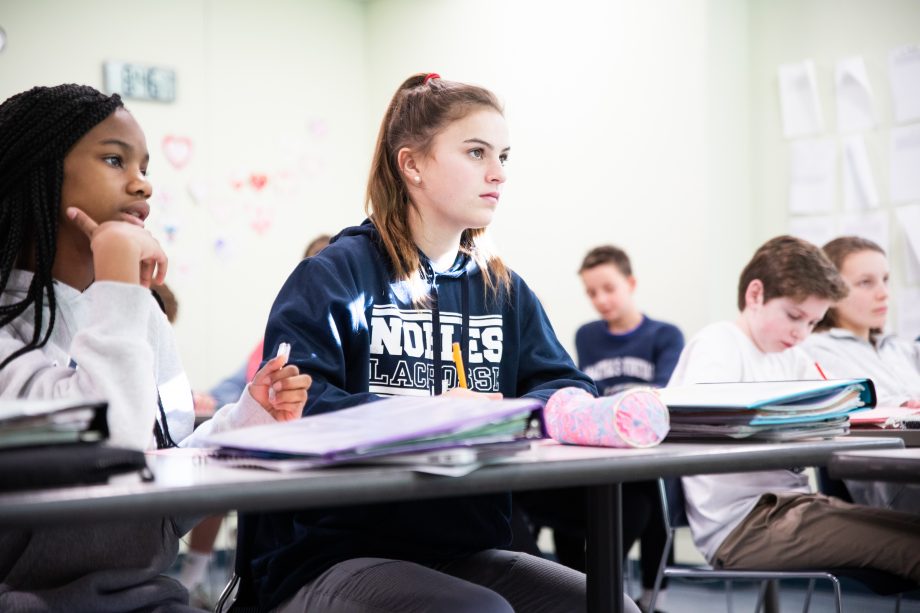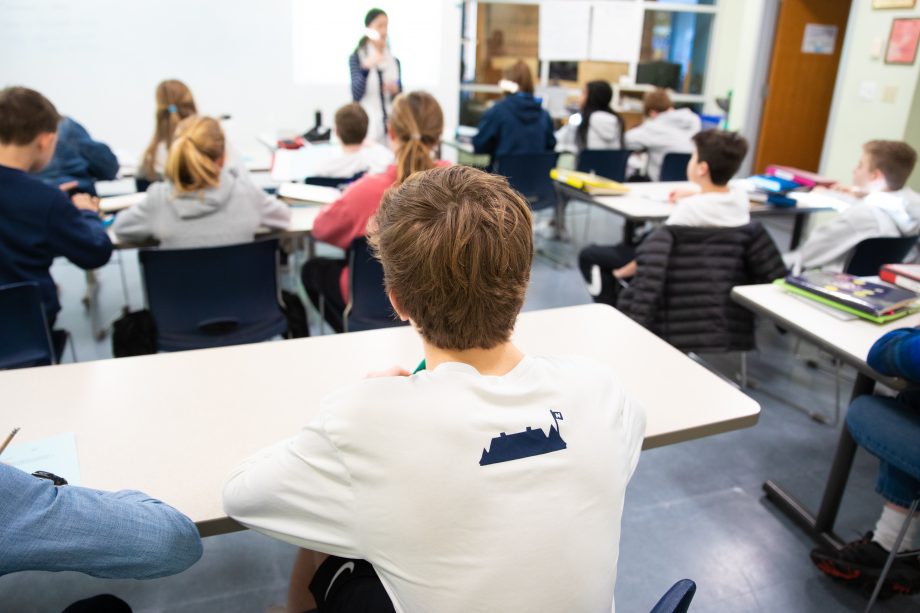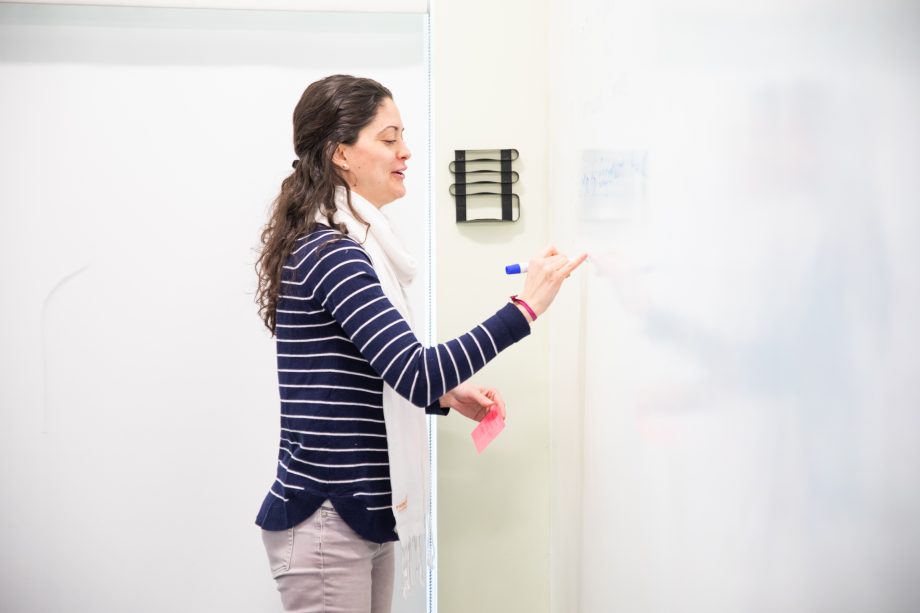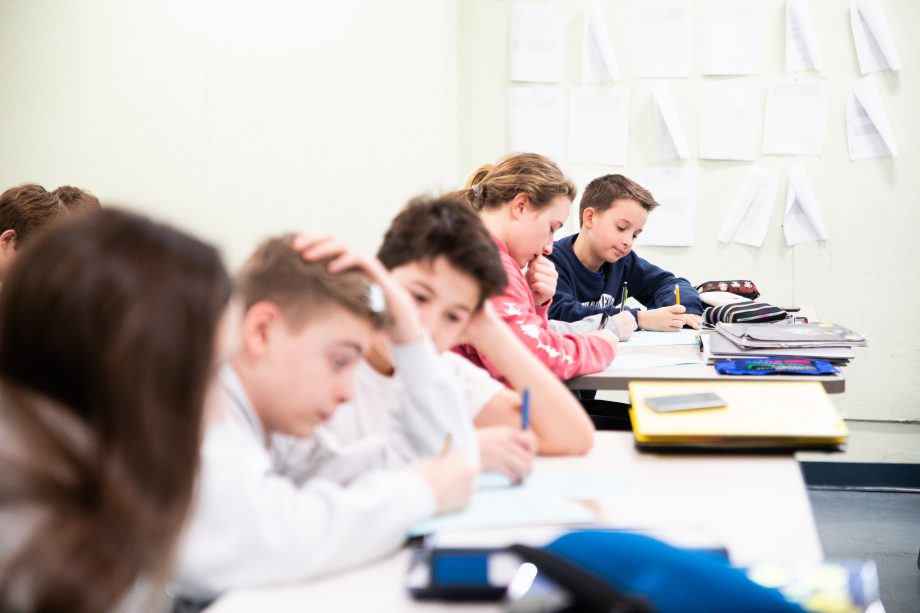Colette Finley gets her Class VI pre-algebra class moving right away, presenting them with a problem and asking them to use the order of observation, and this sharp group of sixies is ready to roll. It is the first period of the day and the students, who sit in rows facing the board, work in groups of two or three.
Finley lightens the atmosphere after the students successfully share their answers, reflecting on the two days they had off at the beginning of the week: “I feared that since I hadn’t seen you for a week you had forgotten what numbers were,” she says, smiling. The students all laugh, and the easy connection between Finley and her class of sixies is clear as day.
Taking a moment to recenter the group, Finley outlines for the students what is coming up in the next week or so, when they will be covering chapter 10 and studying exponent rules. A veteran middle school teacher, she tells the students to “take two minutes to work out the wiggles,” offering them a brief window of time to clean out the homework section of their binders, a task they embrace with enthusiasm.
Not a second more than two minutes pass and Finley is redirecting the students again, this time by explaining how placement for next year’s classes will work—they are about to go through the process of selecting students for honors sections, and math is the only course where the students will receive placement. She describes the process in detail so that students understand how placement works and there will be no surprises. This is how the class is run—everything is spelled out very clearly for the students, and nothing is left unexplained. There is a clear plan for the day and for the upcoming weeks, and this structure allows the students to relax and to focus on learning math.
Smoothly shifting gears again, Finley gets the students reengaged with math, writing four problems on the board that they are to complete with their tablemates. She explains that they are returning to a topic they have studied before and are “going back to variable-land,” as these problems address exponent rules, something they have not studied in some time.
The rapport between Finley and the students is as one would hope it to be in a middle school classroom—fun and lighthearted, but structured and with an underlying tone of respect. Finley shifts easily from providing clear and structured overview and explanations to lighthearted banter with the students and they respond with eagerly-raised hands when she asks a question, laughing and smiling when she lightens the atmosphere with humor.
“Make sure you are writing this down now,” and “with a hand,” are phrases that Finley repeats throughout the class, reminding the students to take notes and to raise their hands in an effort to give all students an opportunity to participate, constantly refocusing them and drawing them back in if they grow the slightest bit distracted.
As Finley explains that the students should be efficient with their answers, she says, “remember, mathematicians don’t like to write more than they have to.”
While it would be easy to stand in place at the front of the class to teach the lesson, Finley mixes it up, walking around to discuss problems with students as they work in pairs and giving them immediate feedback and guidance as they need it. It is a large class of 16 students, but she makes it a priority for everyone to participate, taking her time when eager hands raise up high to scan the room for new faces, asking, with a kind smile on her face, “someone I haven’t heard from?”
At one point during the class, all hands shoot up to answer a question, each student keen to be the first to provide the answer. Given the excitement around answering the question, you would think that the students were contestants on “Who Wants to Be a Millionaire,” but it’s simply the typical fervor for this class, a tone set by a teacher who knows middle school students well and has found a myriad of ways to get them excited about learning math.
Finley then asks a daring question for a seventh-grade classroom: “If you made a mistake on the last problem, do you mind sharing it so that we can all learn from it?”
Several hands shoot up.
Amazing. What more could we want for middle school students than for them to feel so comfortable in the classroom that they are eager to share their mistakes in the interest of their class gaining a better understanding of the material?
The period ends and students pack up their notebooks, starting to shuffle out of class, but not before offering one “Thank you, Ms. Finley” after the next as they exit.

